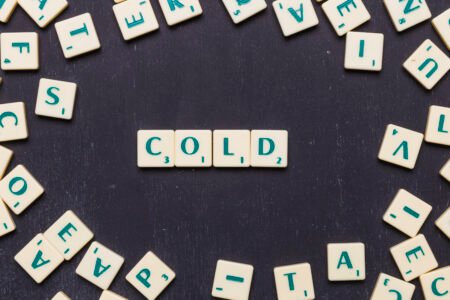Table: Scheme of Work
| Week(s) | Topic(s) | Content |
|---|---|---|
| Week 1 | Excretion | Definition of excretion, importance, excretory organs in humans and plants, examples of excretory products. |
| Week 2 | Tissues and Supporting Systems | Types of tissues in plants and animals, functions, and examples of supporting systems. |
| Week 3 | Components of the Mammalian Skeleton | Overview of the skeletal system, types of bones, and functions. Examples include femur, skull, and vertebrae. |
| Week 4 | Joints | Types of joints, examples, and their functions in movement. |
| Weeks 5-6 | Alimentary Canal/Digestive System | Structure and functions of the alimentary canal, digestion process, and enzymes involved. |
| Week 7 | Feeding Habits | Types of feeding habits, examples across organisms, and their adaptations. |
| Week 8 | Feeding in Amoeba, Hydra, and Man | Feeding mechanisms, differences, and similarities in feeding between these organisms. |
| Week 9 | Transport Systems | Definition, types of transport systems in plants and animals, and their significance. |
| Week 10 | Circulatory System in Mammals | Structure and function of the circulatory system, including the heart, blood vessels, and blood. |
| Week 11 | Mechanism of Transport in Higher Plants | Mechanisms such as diffusion, osmosis, and active transport with examples. |
| Week 12 | Revision | Comprehensive revision of all topics covered in the term. |
| Week 13 | Examination | Assessment based on the term’s topics. |
Detailed Explanations of Topics
Week 1: Excretion
Excretion is the process by which living organisms remove metabolic waste products from their systems. It is essential for maintaining homeostasis and preventing toxic accumulation. In humans, excretory organs include:
- Kidneys – Remove urea, salts, and water via urine.
- Lungs – Expel carbon dioxide and water vapor.
- Skin – Excretes sweat containing water, salts, and small urea amounts.
- Liver – Processes and excretes bile pigments from the breakdown of hemoglobin.
- Large intestine – Eliminates indigestible food residues.
- Plants – Excrete oxygen (photosynthesis by-product) and water vapor through stomata.
Week 2: Tissues and Supporting Systems
Tissues are groups of similar cells working together for specific functions. Types include:
- Epithelial tissue – Covers body surfaces (e.g., skin).
- Connective tissue – Provides support and structure (e.g., bones and cartilage).
- Muscle tissue – Enables movement (e.g., skeletal muscles).
- Nervous tissue – Transmits signals (e.g., brain and spinal cord).
- Plant tissues:
- Parenchyma – Stores nutrients.
- Collenchyma – Provides mechanical support.
- Xylem and Phloem – Facilitate transport of water and nutrients.
Week 3: Components of the Mammalian Skeleton
The mammalian skeleton provides structure and protection. Key components include:
- Skull – Protects the brain.
- Vertebral column – Supports the body and protects the spinal cord.
- Rib cage – Protects the heart and lungs.
- Limb bones – Enable movement (e.g., femur and humerus).
- Pelvic girdle – Supports lower body organs.
- Pectoral girdle – Anchors upper limbs.
Week 4: Joints
Joints are connections between bones that allow movement. Types include:
- Ball-and-socket joint – Found in shoulders and hips.
- Hinge joint – Found in knees and elbows.
- Pivot joint – Found in the neck.
- Gliding joint – Found in wrists and ankles.
- Fixed joint – Found in the skull.
- Saddle joint – Found in thumbs.
Weeks 5-6: Alimentary Canal/Digestive System
The alimentary canal is responsible for digestion and nutrient absorption. Components include:
- Mouth – Begins digestion with saliva and teeth.
- Esophagus – Moves food to the stomach via peristalsis.
- Stomach – Secretes gastric juices for protein breakdown.
- Small intestine – Absorbs nutrients through villi.
- Large intestine – Absorbs water and forms feces.
- Anus – Eliminates waste.
Week 7: Feeding Habits
Organisms exhibit diverse feeding habits, including:
- Herbivores – Feed on plants (e.g., cows and deer).
- Carnivores – Feed on other animals (e.g., lions and hawks).
- Omnivores – Feed on both plants and animals (e.g., humans).
- Parasites – Derive nutrients from hosts (e.g., tapeworms).
- Saprophytes – Feed on dead matter (e.g., fungi).
- Filter feeders – Extract nutrients from water (e.g., whales).
Week 8: Feeding in Amoeba, Hydra, and Man
- Amoeba – Engulfs food through pseudopodia via phagocytosis.
- Hydra – Uses tentacles to capture prey and digest it in its gastrovascular cavity.
- Man – Relies on a complex digestive system for nutrient absorption. Examples:
- Amoeba engulfs algae.
- Hydra preys on small crustaceans.
- Humans consume varied diets including carbohydrates, proteins, and fats.
Week 9: Transport Systems
Transport systems ensure the movement of nutrients, gases, and waste. Examples include:
- Xylem – Transports water in plants.
- Phloem – Distributes sugars in plants.
- Blood vessels – Carry blood in animals.
- Heart – Pumps blood.
- Capillaries – Exchange materials at tissue levels.
- Veins and arteries – Return and distribute blood.
Week 10: Circulatory System in Mammals
Components include:
- Heart – Four-chambered organ pumping blood.
- Arteries – Carry oxygenated blood.
- Veins – Return deoxygenated blood.
- Capillaries – Site of gas exchange.
- Blood – Transports nutrients and oxygen.
- Lymphatic system – Drains excess fluids.
Week 11: Mechanism of Transport in Higher Plants
Plants use mechanisms like:
- Diffusion – Movement of molecules from high to low concentration.
- Osmosis – Water movement through a semi-permeable membrane.
- Active transport – Movement against a concentration gradient.
- Root pressure – Pushes water upward.
- Transpiration pull – Draws water via evaporation.
- Capillary action – Moves water through narrow tubes.
Week 12: Revision
Thorough review of all topics through quizzes, discussions, and practical sessions.
Week 13: Examination
Assessment of understanding through tests, practicals, and oral questions.



